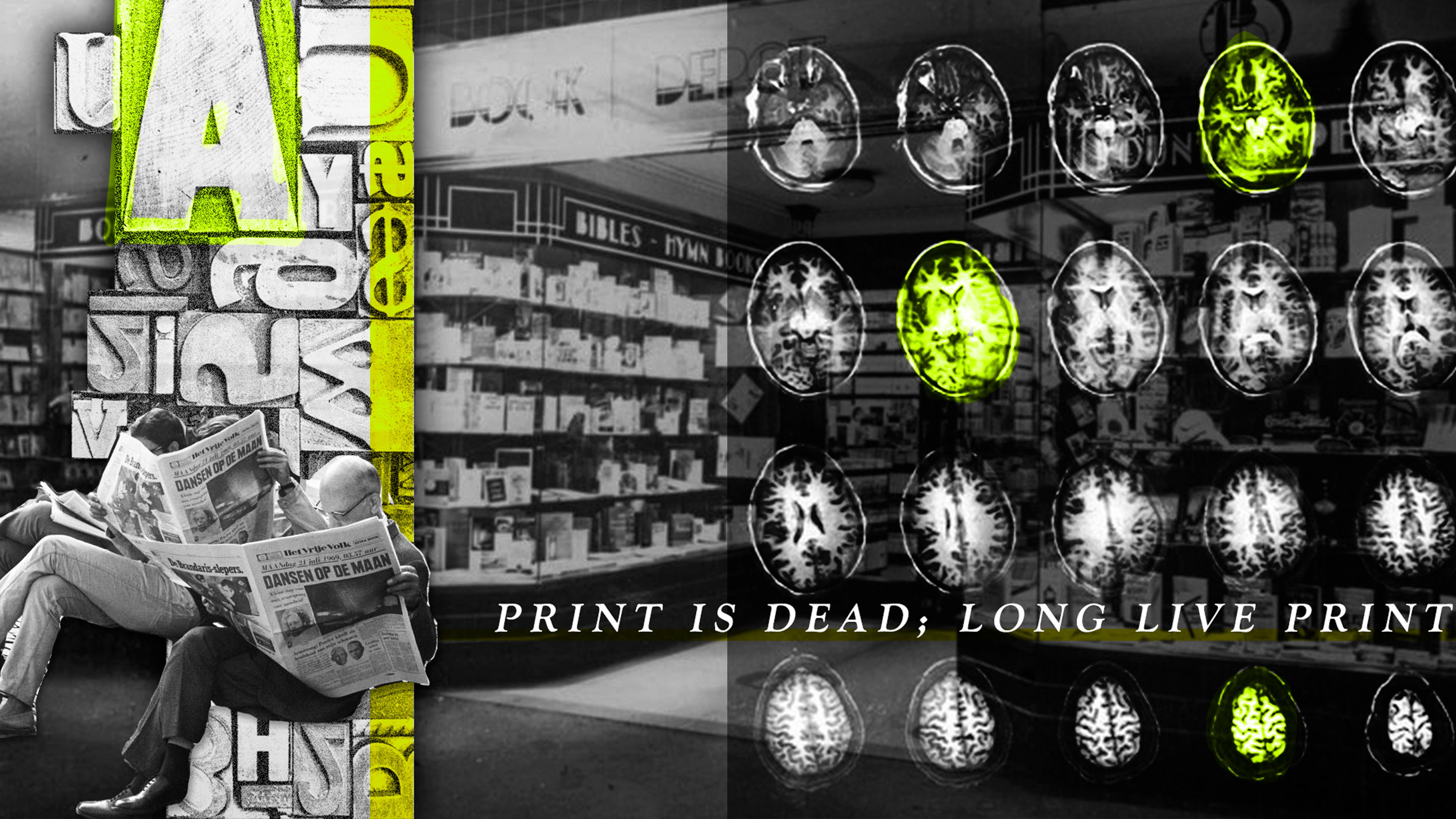

Print is Dead; Long Live Print
June 14, 2017
As we find ourselves rocketing into the digital age there is the perception that there’s no looking back – but is there? So many of us rely on the ability to consume information online that the amount of readily available content has skyrocketed, creating a culture of skimming. This fast-paced approach makes it even harder to grab your reader’s attention. Digital marketing campaigns just don’t have the same lifespan or impact they used to, leaving marketers and designers struggling to create lasting impressions.
But what if what’s old is actually new again? What if we could incorporate and revitalize traditional, tried-and-true marketing tactics? Print advertising and direct mail are examples of older marketing tools that are reemerging as effective strategies for delivering a lasting impact to consumers.
Amid the ephemeral cloud of digital communications, print is a method that can create a more memorable connection. Even when considering the younger generation, teachers and professors alike report that their students can’t focus and often multitask when completing reading assignments onscreen compared to when they read the materials on a hard copy.1 These fundamental tendencies also carry over to consumer behavior. According to a recent study performed by TrueImpact, a Canadian neuromarketing firm, brand recall was 70% higher in subjects consuming print compared to digital mediums.2
How and why does this work? There are several factors at play here, both emotional and physiological. Print and environmental advertising, in general, allows for more real estate to incorporate vivid imagery. A recent study completed by the Journal of Consumer Research has found conclusive evidence to prove that the use of large vivid imagery can create the impression of experiencing the product as well as increase overall positive feelings about the brand.3
Along with the visual connection that print can convey, the most unique attribute that is associated with print and no other medium is the tactile sensory experience that it can deliver. The brain is fundamentally more stimulated when consuming something in your hand versus something you’re watching on a screen. A 2009 study by Bangor University used MRI technology to analyze brain activity and the effects of paper versus digital media. They concluded that physical material is more connected to memory because it engages with spatial memory pathways in the brain. Also, there were signs of more emotional processing and more brain responses connected with internal feelings.4 Targeting Millennials? These findings still hold true. Surprisingly enough, studies show that Millennials are the most nostalgic of any age group, which leads to the theory that digital experiences are not satisfying this emotional need.5
What’s the best way to incorporate print into your marketing strategy? As with most things, balance is key. Print should be only one of the many tactics that you use in your overall marketing plan. For example, room drops and giveaways as part of your tradeshow strategy are a great way to generate interactivity and a lasting impression with customers and partners at events. Direct mail campaigns have more power than ever since the volume of mail in the United States has dropped dramatically, and can be perfect for account-based marketing. When you’re trying to reach a small, targeted group, you can really stand out by dropping something tangible on their desks.
When creating your marketing plan, be sure to think outside of your digital options and take advantage of other ways to reach your targets. Be sure to create a concept that’s really special to maximize the impact that your print piece will have. Also, make sure your placements make sense for your audience and fit into your overall strategy. If done right, this holistic approach will allow you to stand out in the crowd. Print is not dead, it was merely forgotten.
1 10 Reasons Why Print Isn’t Dead: Why Marketers Need To Print. 1st ed. HubCast, 2015. Web. 1 June 2017.
2 Dooley, Roger. "Paper Beats Digital In Many Ways, According To Neuroscience". Forbes.com. N.p., 2015. Web. 1 June 2017.
3 Twist, Mary Ann. "Faking It: Can Ads Create False Memories A Bout Products?". The University of Chicago Press Journals 1.1 (2011): 1. Web. 1 June 2017.
4 Dooley, R. Paper Beats Digital In Many Ways, 01.
5 HubCast, 10 Reasons Why Print Isn’t Dead, 01.